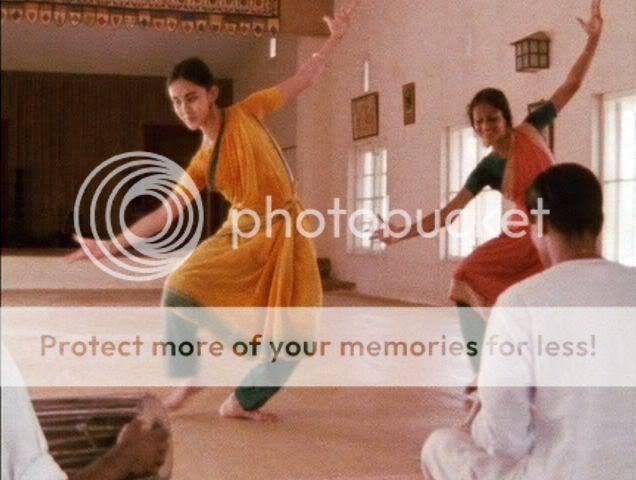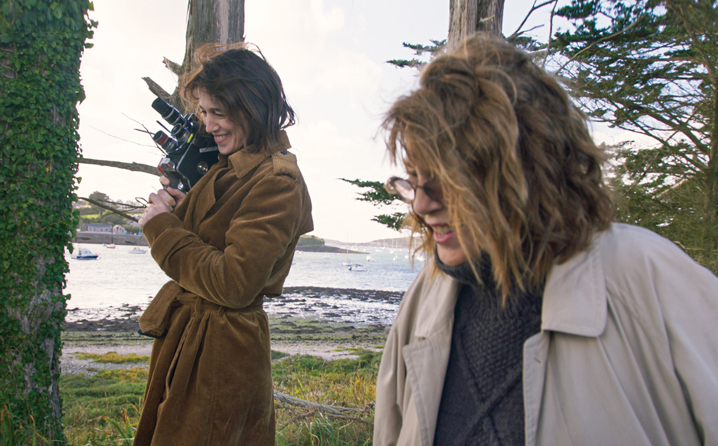The Lost Leonardo: Salvator Mundi, the $450m icon to greed and deceit
The story of the controversial painting, told in a new film, tells us more about us than it does about art, says Rachel Campbell-Johnston.
August 19 2021
How do you like to imagine the art world? A land of lofty ideals and elevated scholarship? A home for beauty and feeling, sensitivity and truth? Well here is a story to rip most such illusions to shreds.
The Lost Leonardo, a dramatised documentary released in September, tells the stranger-than-fiction tale behind Salvator Mundi, a painting that, controversially attributed to Leonardo da Vinci, became in 2017 the most expensive picture (possibly even object) sold to date.
You will no doubt remember the furore it stirred. Was this solemn image of Christ, his right hand raised in a gesture of divine benediction, his left cupping a crystal orb, really a long lost painting by the supreme Renaissance master? Fewer than 20 paintings by this genius survive. Could this be the long absent brother of the Mona Lisa? Experts’ musings poured into the media. We sipped our breakfast coffee and grappled with debates about provenances, marouflaged panels and pentimenti, the intricacies of painted ringlets and refracted light.
For those who have forgotten (or never engaged in the first place), this new film will take you through many of the principal arguments about the painting’s authenticity — for and against. Yet The Lost Leonardo will not tell you whether Salvator Mundi is authentic or fake. The mystery at the heart of the film is instead about how in our global era an image can be turned into an icon and so take on a life of its own. And this, it turns out, depends far less on lofty aesthetics than it does on filthy lucre. The Lost Leonardo is a story about money. Behind the serene surface of that painting seethes a bubbling cesspit of corruption, manipulation and greed.
The story starts in 2005. A “sleeper” — a painting that comes onto the market (usually at auction) but is probably a far better work than its seller has realised — turns up in New Orleans. A “sleeper hunter” buys it for $1,175 and takes it to New York. There a renowned art conservator, Dianne Modestini, begins a long and meticulous restoration. “One evening, wrestling for the tenth time with a small loss on the transition between the lower and the upper lip,” she tells us, she realises that the treatment is precisely that which is found in the Mona Lisa. “My hands became shaky . . . no one except Leonardo could have painted this picture,” she announces as a drum beat rolls. This is a film that likes to keep tension levels taut.
Cue a cacophony of competing voices. “The most improbable story that has ever happened in the art market.” “Everybody wanted it to be a Leonardo . . . and so everybody took the most optimistic view that they could.” “It’s not even a good painting.” “I believe that it has its own power and that power is experienced only truly when standing in front of it.” “This is simply a matter of economics.”
The director Andreas Koefoed has no specialist knowledge of the art world, he tells me when I speak to him on the telephone. He has never even stood in front of Salvator Mundi, he says. But from the moment he heard the story of this painting he was riveted. “It tells us so much about ourselves as human beings,” he says. It “lays bare the mechanisms of the human psyche”. He sees the painting, he says, as “a prism through which we can understand ourselves and the world that we live in”.
Koefoed picks a clear-sighted path through the tangle of arguments as he tracks the progress of the painting as it is transported (first in cardboard boxes and bin bags, later in portfolios and specially constructed climate-controlled cases) around the globe, its price skyrocketing every time it is sold on. Twelve years after a shabby panel catalogued as “After Leonardo da Vinci” was sold in New Orleans for little more than $1,000, the gavel is falling in New York for a record-smashing $450.3 million.
Unravelling the hidden agendas of some of the richest men and most prestigious art institutions in the world, Koefoed and his team have gained (sometimes unprecedented) access to curators, restorers, dealers and art historians as well as investigative journalists, CIA operatives, bankers and businessmen in a documentary that leads us deeper and deeper into frequently secretive and often all but inaccessible domains; into worlds, he explains, “in which anything can be bought and sold, where prestige, power and money play out beneath the beautiful surface of art”.
“There is a saying,” one of the film’s contributors announces, “that after drugs and prostitution, the art market is the most unregulated in the world.” Meet the unicycling businessman Yves Bouvier, for instance. He is king of the freeport — those shadowy no man’s lands that, serving as tax-free havens, harbour billions of dollars of never-seen masterpieces in their sprawling warehouse cities. These blue-chip paintings, the documentary explains as the camera pans across hoarded canvases, are increasingly used as collateral for bank loans. The collector locks paintings away in a freeport facility while liberating the capital for redeployment elsewhere. “If taxes were reasonable,” Bouvier’s complacently cigar-puffing associate pronounces, “people would not have to play that game.”
In 2013 Bouvier bought Salvator Mundi from an American dealer, Warren Adelson, a partner in a consortium that had already touted the picture around pretty much every significant museum but had failed to find a buyer. “I felt I had the rarest painting in the world by the greatest artist in the world and I couldn’t sell it,” he laments. Then he came across Bouvier, who was prepared to buy it for $83 million. Just two days later Bouvier sold it for $127.5 million to Dmitry Rybolovlev, a billionaire oligarch who, with the collapse of one of his company’s Russian potash mines, had found himself responsible for one of the biggest ecological disasters in recent history. He needed to get his money out of Russia and into mobile assets quickly.
Bouvier made a profit of more than $44 million in barely 48 hours. He grins impishly as he reveals the succession of emails that chart every stage of his controversial transaction. “But I was nice,” he announces blithely. “He was ready to pay $130 million, but I gave him a discount if he would pay soon.”
It’s not just businessmen who have vested interests. Big arts institutions have skin in the game. Luke Syson, a former curator at the National Gallery in London, is behind the controversial decision to display Salvator Mundi as an autograph Leonardo in a 2011 blockbuster exhibition. What was at stake for you personally, an interviewer wonders. “Nothing,” he replies, but he looks less confident than he sounds. We are warned by another contributor that we “are dealing with the ego and dreams of academics” and “every academic wants to make a discovery”.
Koefoed insists that he has not offered a platform from which any single person in this drama can set their agenda. Instead, all too frequently his interviewees hang themselves in a noose they have woven from their own words.
“Institutional knowledge and authority is not as clean or authoritative as you might imagine,” another sceptic declares. “Power is never neutral.” Nothing makes this plainer than the story of the mysterious Louvre publication.
The restorer Modestini (who also, incidentally, admits that she will be “appropriately” remunerated for her work on Salvator Mundi) chances on a book left on a friend’s coffee table. This book gives the painting the massively coveted validation of the Louvre’s director. An amazed Modestini dashes off to the museum bookshop, only to find that the publication is not there and nor, apparently, does anyone know anything about it. An investigative journalist from The Art Newspaper picks up the thread. No such catalogue was ever published, she is told. She persists and it eventually emerges that, in advance of the 2019 Louvre exhibition of Leonardo, a secret booklet was produced. It described the technical examination of Salvator Mundi that had taken place in the Louvre’s labs and concluded that “the results of the historical and scientific study . . . allow us to confirm the attribution of the work to Leonardo da Vinci”.
That was bingo for the painting’s present owner, who (it had eventually emerged after a great deal of post-sale speculation) was the crown prince of Saudi Arabia, Mohammed bin Salman (known as MBS). His masterpiece, MBS insisted, had to be displayed at the Louvre alongside the Mona Lisa. The very idea was evidently too much for the French. They balked, the loan was retracted and so the Louvre also retracted its book authenticating the picture. Since then, however, it has been reported that it was the Saudis who paid for the Louvre’s 2018 scientific study of the painting and they apparently own the rights to it. As Ben Lewis, the author of The Last Leonardo, wrote in The Times in April 2021, this “not only raises questions of financial interest, but also begs the question of why, if [the study] is so positive, they have not published or at least leaked it themselves”.
The art world is a can of worms. Just in case you haven’t already got the message Koefoed’s camera zooms in on a writhing knot of the slimy creatures. Behind the regally forbidding and intellectually rarefied façades of the art world lies a vicious swarm of competing interests.
So where does this leave Salvator Mundi? Has the painting disappeared behind the hype? It seems no accident that, as part of its mercenary marketing campaign — tracked by the documentary — for the 2017 auction Christie’s presented a video that never actually showed us the painting, only the emotional responses of the people (Leonardo DiCaprio most prominent among them) who had queued in their thousands to see it.
The reality has dissolved away into the myth. The painting has become the ultimate trophy. And “everybody was complicit in dreaming up this beautiful dream”, declares the Pulitzer award-winning art writer Jerry Saltz, among the most consistently vocal critics of the entire caboodle. The truth has vanished. And for that matter, so (at least temporarily) has the painting. Closeted away in the collection of MBS (“Is the last known Leonardo now on a luxury yacht?” a journalist wonders) it has not been shown in public since the day it went up for sale.
“I suspect,” Koefoed says, “that within a few years MBS will show it in Saudi Arabia — even build a museum.” The Saudi Ministry of Culture, among several other significant institutions (Christie’s and the Louvre included), have refused to be interviewed for this documentary. But there has been art world talk about a museum. “It would make sense,” Koefoed says. “MBS could use Salvator Mundi to his benefit, much like the French use the Mona Lisa.” The painting could become part of his rebranding strategy for Saudi Arabia, a nation that, he goes on to suggest, wants to show us that it is not just about oil, not to mention human rights abuses. “This trophy masterpiece could play part of a much wider strategy,” Koefoed says.
Art has long been about money. Leonardo was paid by the Medicis after all: a family who, much like today’s Saudi royal family, understood the political power of culture. Besides, a large part of the fascination of any artwork lies in what it can tell us about our human psychology and society. An image of Christ as saviour may not hold the religious sway that it once did, but still this painting can reveal what our society values. The power it now embodies is the power of money.
Yet this picture may still communicate on some more profound level. We hanker for the genuine, the authentic, the true. The more cynical may manipulate this yearning for their own financial benefit, but others still cling to belief in some purer form of redemption. Leonardo, the great genius who united art and science in his quest for the truth, can look to our modern age very much like a saviour. Little wonder we long to discover another of his precious relics. Salvator Mundi still stands as a symbol of hope.
The Lost Leonardo is released by Sony Pictures in cinemas across the UK and Ireland from September 10 (thelostleonardo.co.uk).
source | london times
The Lost Leonardo was released in the states on August 13.













 )
) )
)

